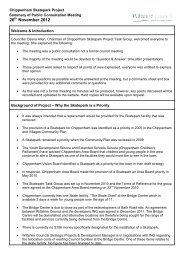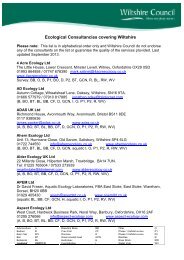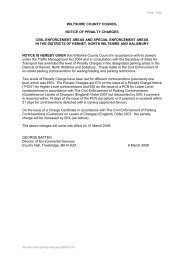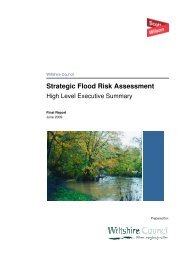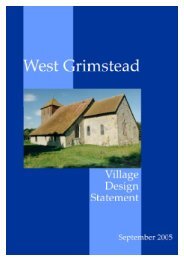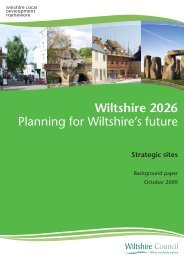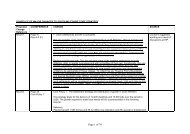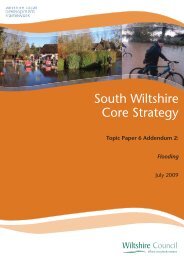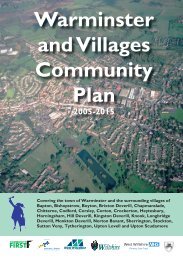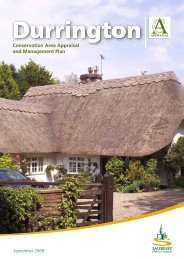Retail - Wiltshire Council
Retail - Wiltshire Council
Retail - Wiltshire Council
- No tags were found...
You also want an ePaper? Increase the reach of your titles
YUMPU automatically turns print PDFs into web optimized ePapers that Google loves.
Promotes consumer choice and competition for town centre development including:• Diversification of uses• <strong>Retail</strong> mix• Recognise importance of smaller shops• <strong>Retail</strong> existing markets and re-introducing others• Conserve and enhance established character• Plan for a range of tourism, leisure and tourism activities.Former PPS6, set criteria for assessment retail applications, however, EC7.7 suggests that‘an apparent lack of sites of the right size an in the right location should not be a reason forLPA’s to avoid planning to meet the identified need for development. In thesecircumstances, LPAs should set out criteria based polices for assessment applications.Evidence to support planning applications has amended to just a sequential assessment andan impact assessment. The level of detail should be relevant to the size and scale ofproposal. Comprehensive impact assessment only need for developments over 2500 sq m.More detail is provided as to what constitutes a sequential and impact assessment.2.4 PPG13 – Transport (With respect to retail development)• Allocate or reallocate sites which are (or will be) highly accessible by public transport fortravel intensive uses (including offices, retail, commercial leisure, hospitals andconference facilities), ensuring efficient use of land, but seek, where possible, a mix ofuses, including a residential element;• Policies for retail and leisure should seek to promote the vitality and viability of existingtown centres, which should be the preferred locations for new retail and leisuredevelopments.• Local authorities should establish a hierarchy of town centres, taking account ofaccessibility by public transport, to identify preferred locations for major retail and leisureinvestment. At the local level, preference should be given to town centre sites, followedby edge of centre and, only then, out of centre sites in locations which are (or will be) wellserved by public transport.• Where there is a clearly established need for such development and it cannot beaccommodated in or on the edge of existing centres, it may be appropriate to combinethe proposal with existing out of centre developments, provided that improvements topublic transport can be negotiated.• Where retail and leisure developments are located in a town centre, or on an edge ofcentre site as defined by PPG6, local planning authorities should consider allowingparking additional to the relevant maximum standards provided the local authority issatisfied that the parking facilities will genuinely serve the town centre as a whole andthat agreement to this has been secured before planning permission has been granted.• Local planning authorities should ensure that the scale of parking is in keeping with thesize of the centre and that the parking provision is consistent with the town centre parkingstrategy.http://www.communities.gov.uk/index.asp?id=11440152.5 Regional Spatial Strategy for the South West• Salisbury is identified as a Strategically Significant City and Town within the RSS, thisidentifies Salisbury as a primary focus for development offering the greatest opportunitiesfor employment, and the greatest levels of accessibility by means other than car. Thestrategy emphasis is to realise potential.CM09030/F 30



